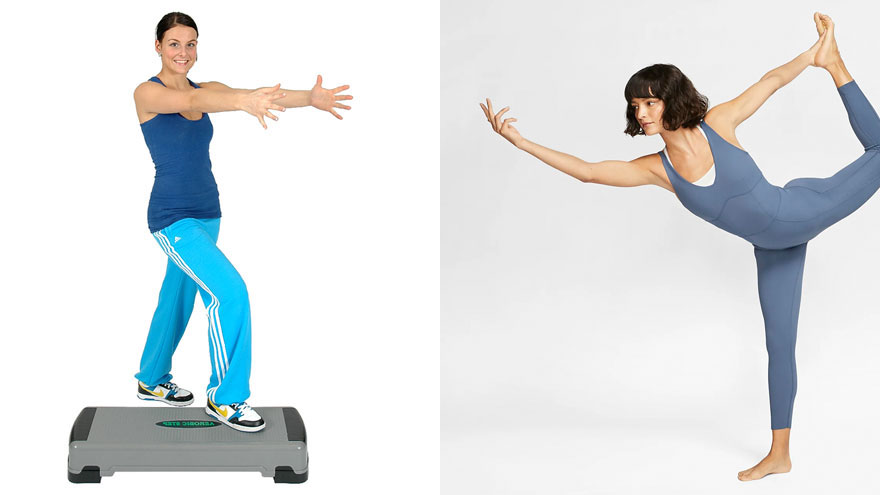What Are the Differences Between Yoga and Aerobic Exercises?
Yoga and aerobic exercises both promote weight management and help prevent chronic conditions such as type 2 diabetes, heart disease, anxiety and depression. However, these activities are not equivalent; aerobic exercise has powerful cardiovascular benefits, whereas yoga provides a strength-training workout and is excellent for building balance and coordination.
If it’s been a long time since you exercised, see your doctor before starting a new yoga or aerobics routine.

Aerobic Benefits
To qualify as aerobic exercise, an activity must use a major muscle group, elevate your heart and breathing rates, and last at least 10 minutes. Walking, riding a bicycle, playing softball and rowing are all examples. Aerobic exercise, also called cardio, protects your cardiovascular system in ways that yoga can’t.
Cardio forces your heart to work harder for a prolonged period, building efficiency so that it eventually beats slower. Cardio also causes your lungs to work harder, making them more efficient and building endurance. Over time, aerobic exercise lowers blood pressure and helps clear dangerous plaque from your arteries, reducing your risk of heart disease.
Yoga Benefits
Yoga may not provide a cardiovascular workout, but it still helps control high blood pressure, according to MayoClinic.com. The activity also builds muscular strength along with flexibility and balance, all of which reduce your risk of injury from falling or other accidents.
And while both aerobics and yoga can help control stress, yoga focuses on mindfulness and breathing techniques along with physical postures, offering a multipronged solution for anxiety that you don’t get from cardio. Yoga does require more technical skill than walking or other simple aerobic activities, so there may be a greater learning curve.
Weight Loss
All exercise uses calories, but aerobic activity has more energy-burning potential than yoga, and tough cardio is more effective for weight loss. During the average 30-minute hatha yoga session, a 185-pound person burns around 178 calories — about the equivalent of walking at 3.5 mph.
More intense yoga styles burn more calories, but none are likely to compare with vigorous aerobics: for example, a 185-pound person burns 444 calories in half an hour when running at 6 mph or swimming the breaststroke.
Exercise Guidelines
You need both cardio and strength training for optimal health, so fit aerobic exercise into your schedule along with yoga, weight training or calisthenics — body-weight exercises such as push-ups and sit-ups.
Perform strength training twice per week, and get 150 to 300 minutes of moderate cardio or 75 to 150 minutes of vigorous cardio every week as well. During moderate cardio you can speak easily, but singing is difficult; during vigorous cardio, you need to catch your breath after speaking a few words.
You Might Also Like :: Zumba Instructor Certification

